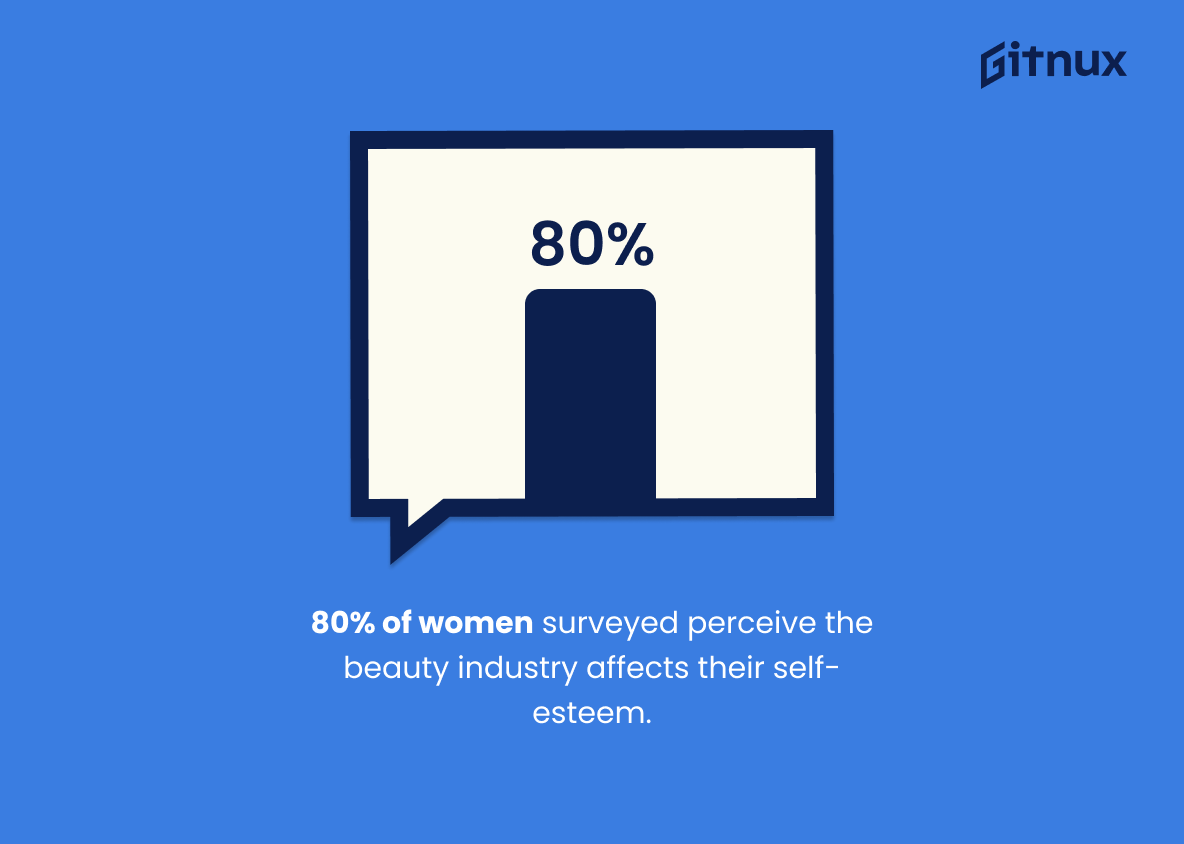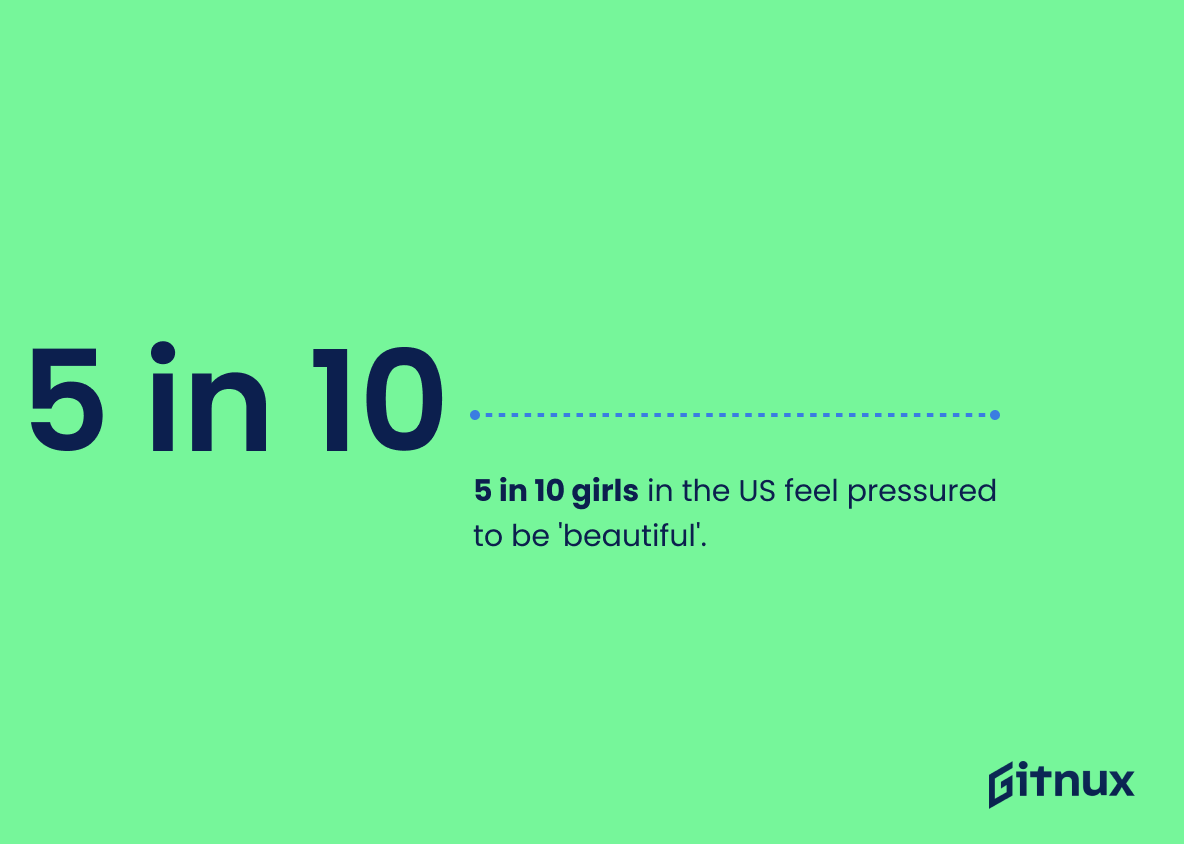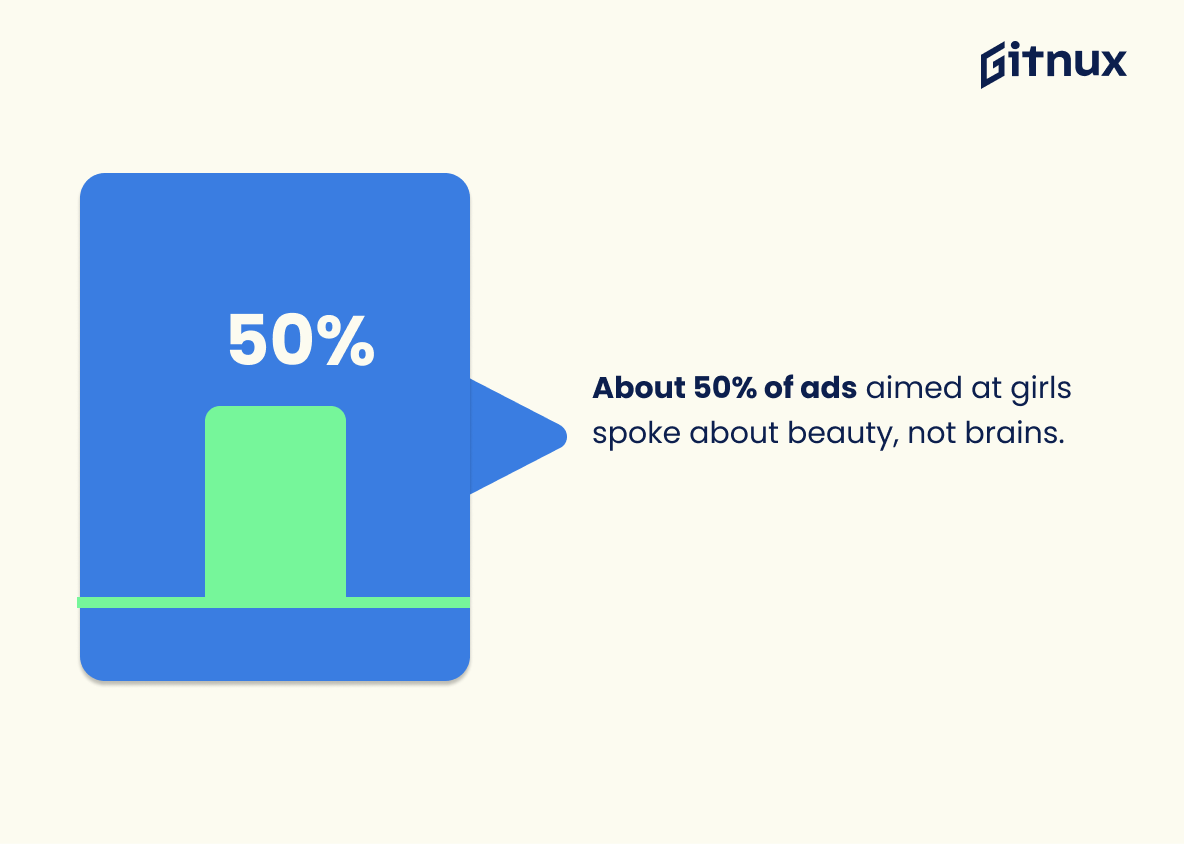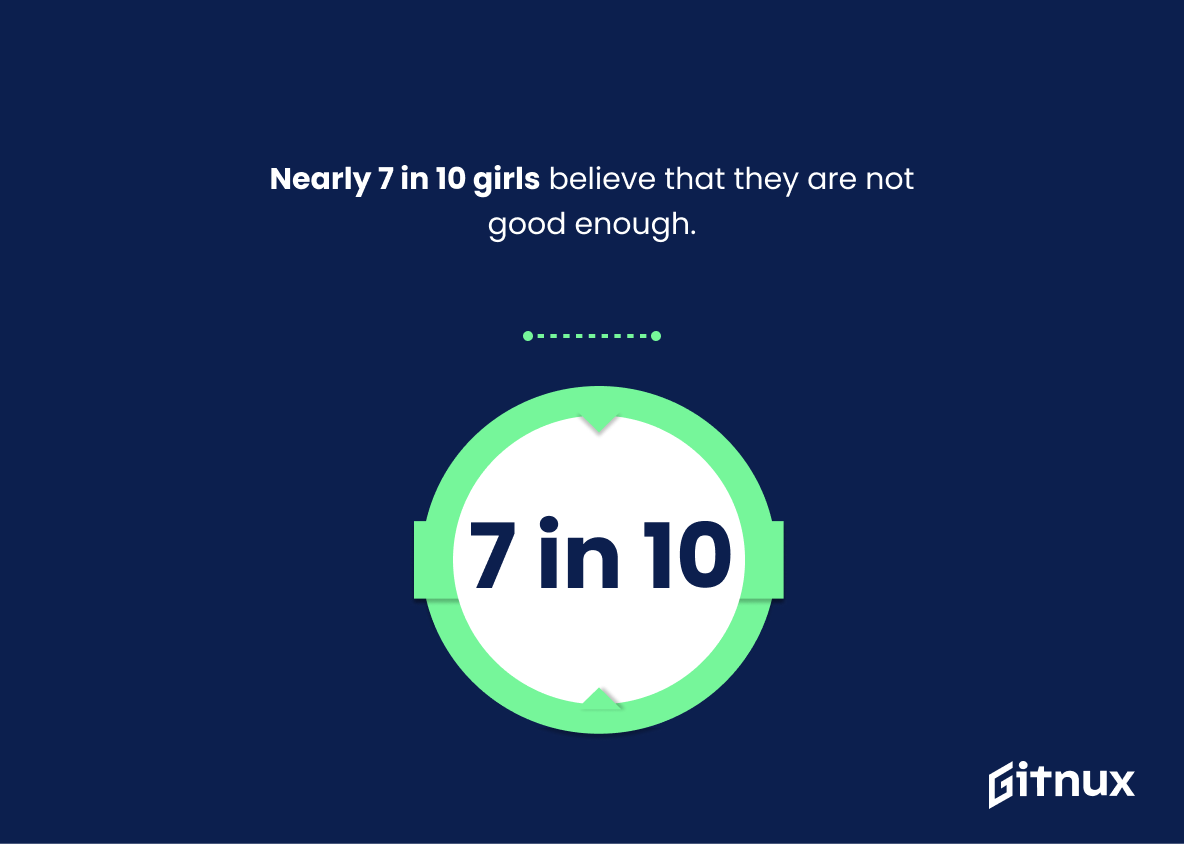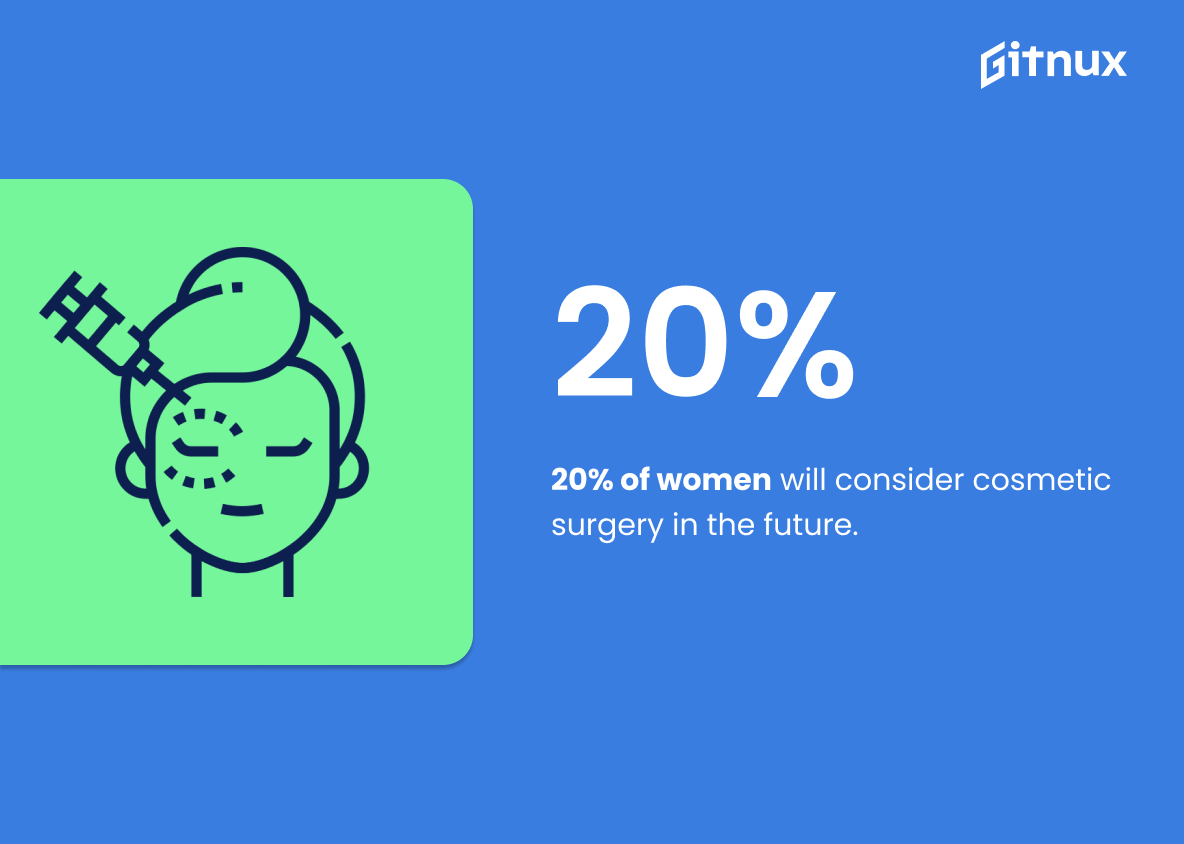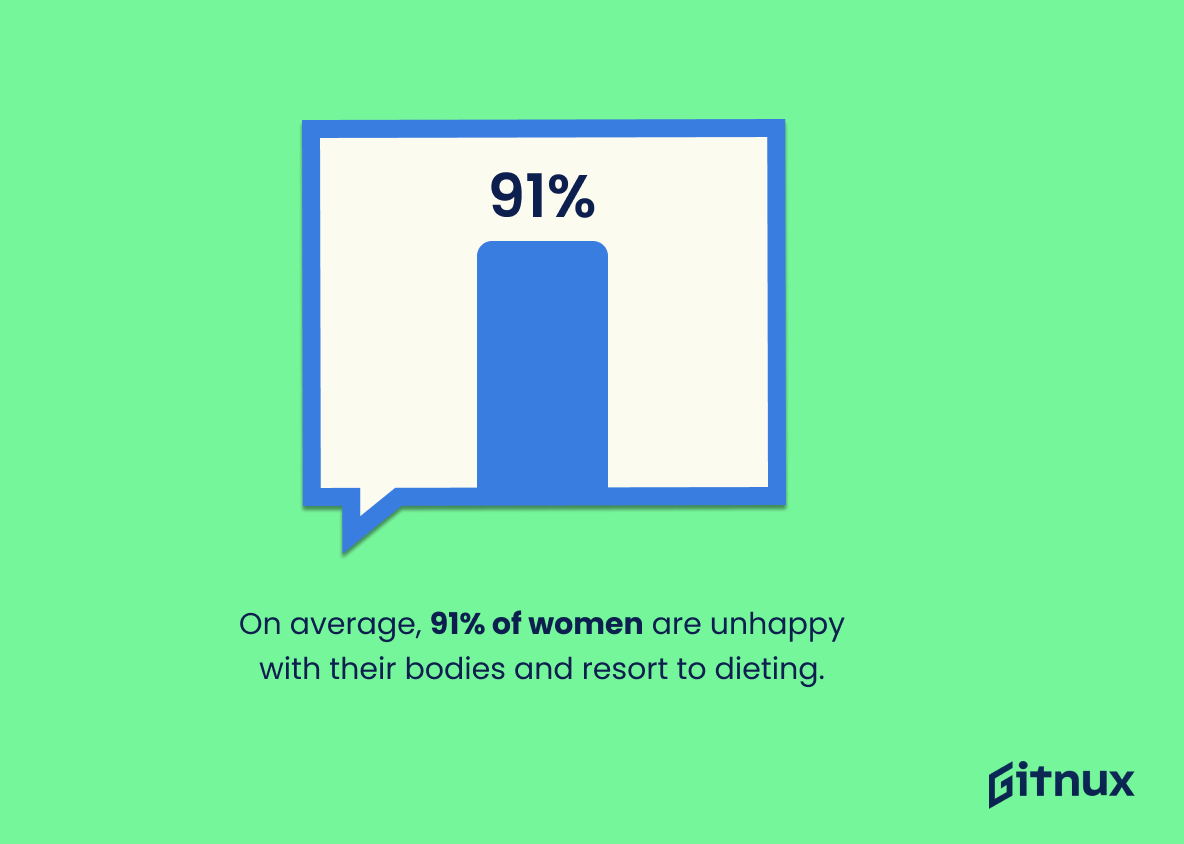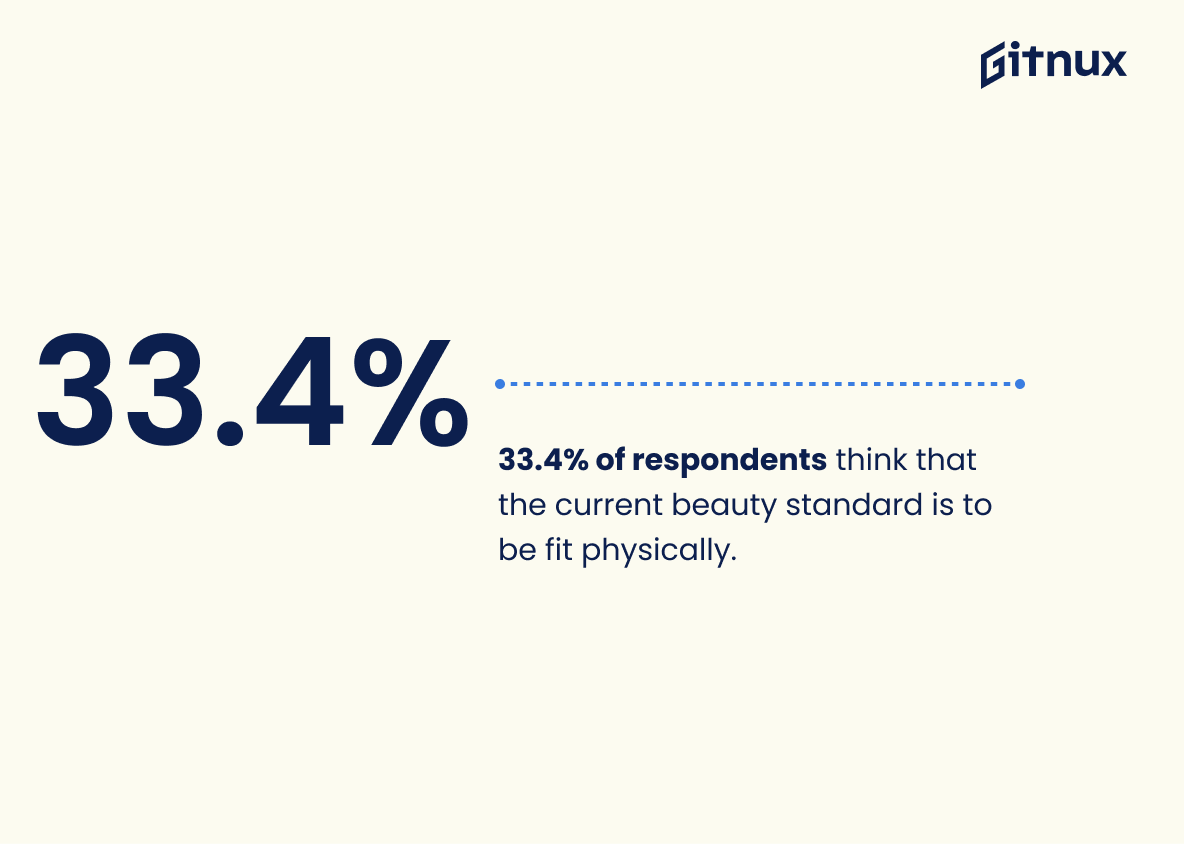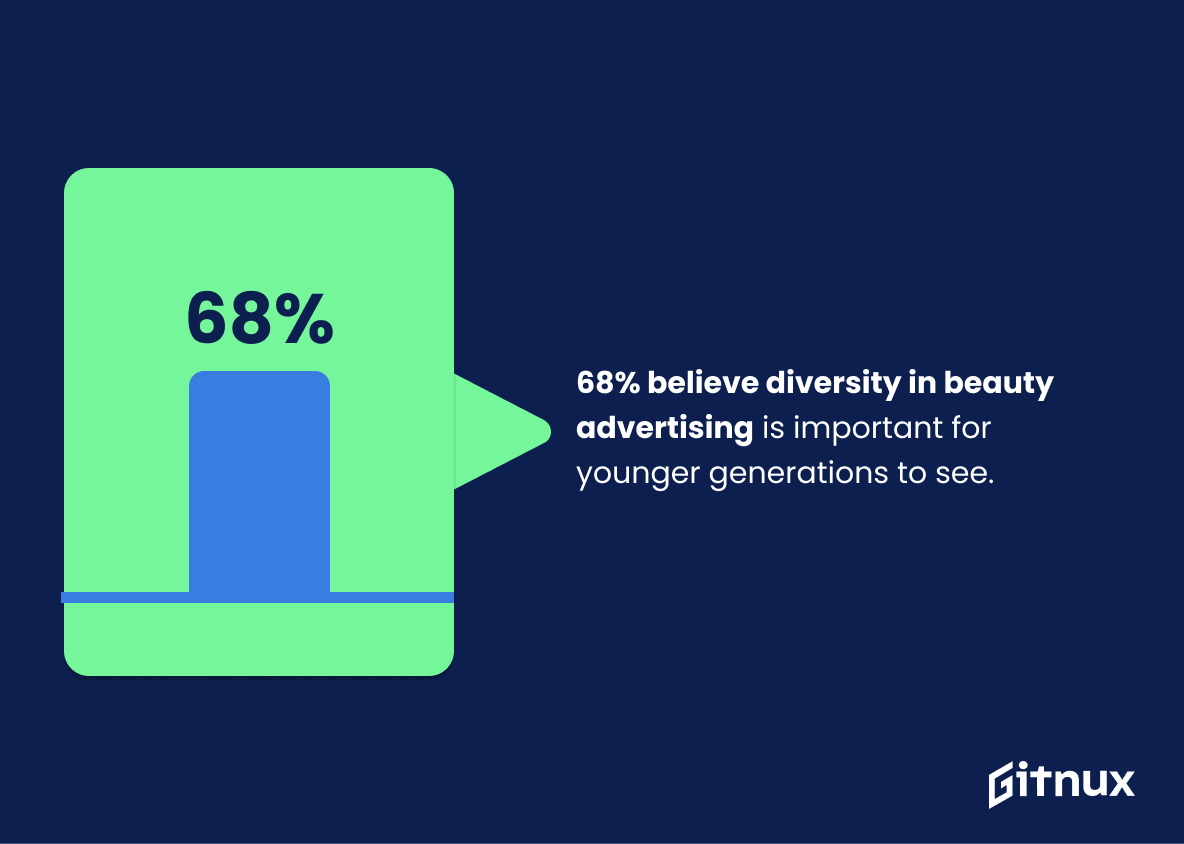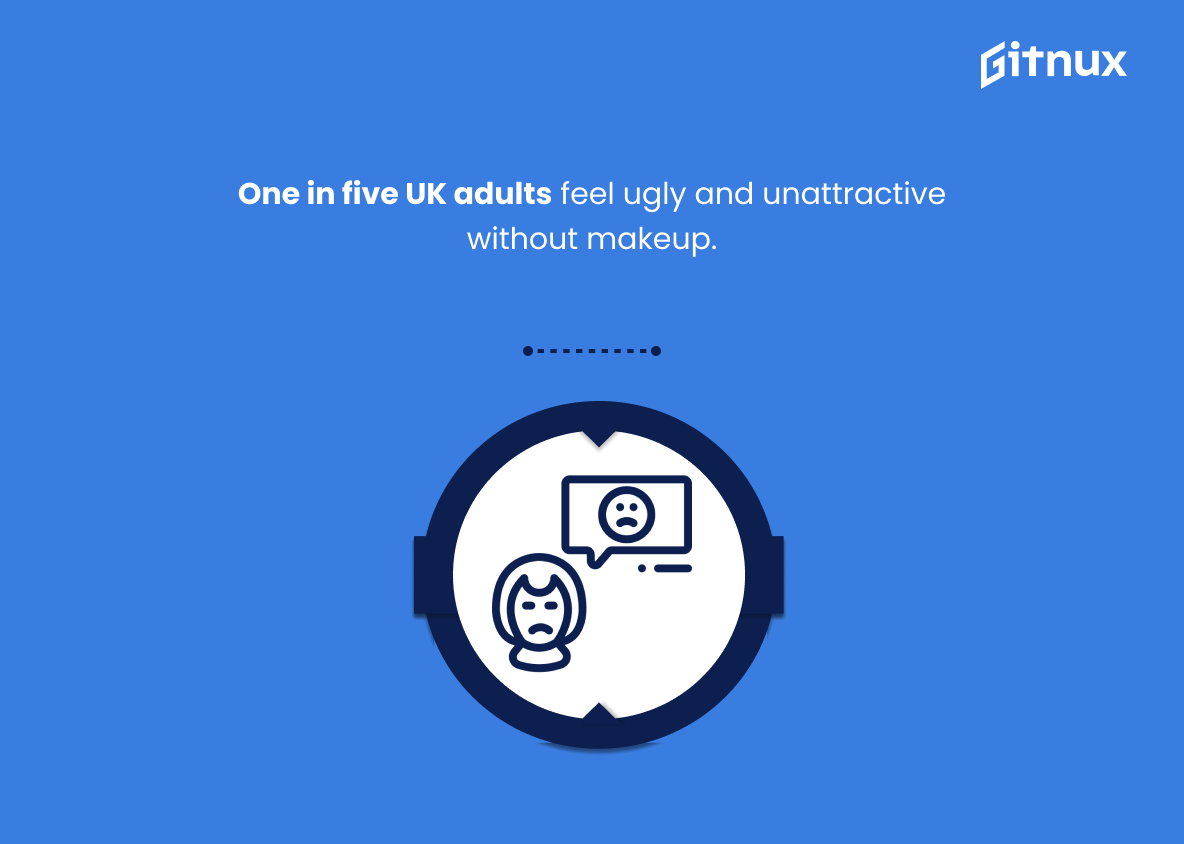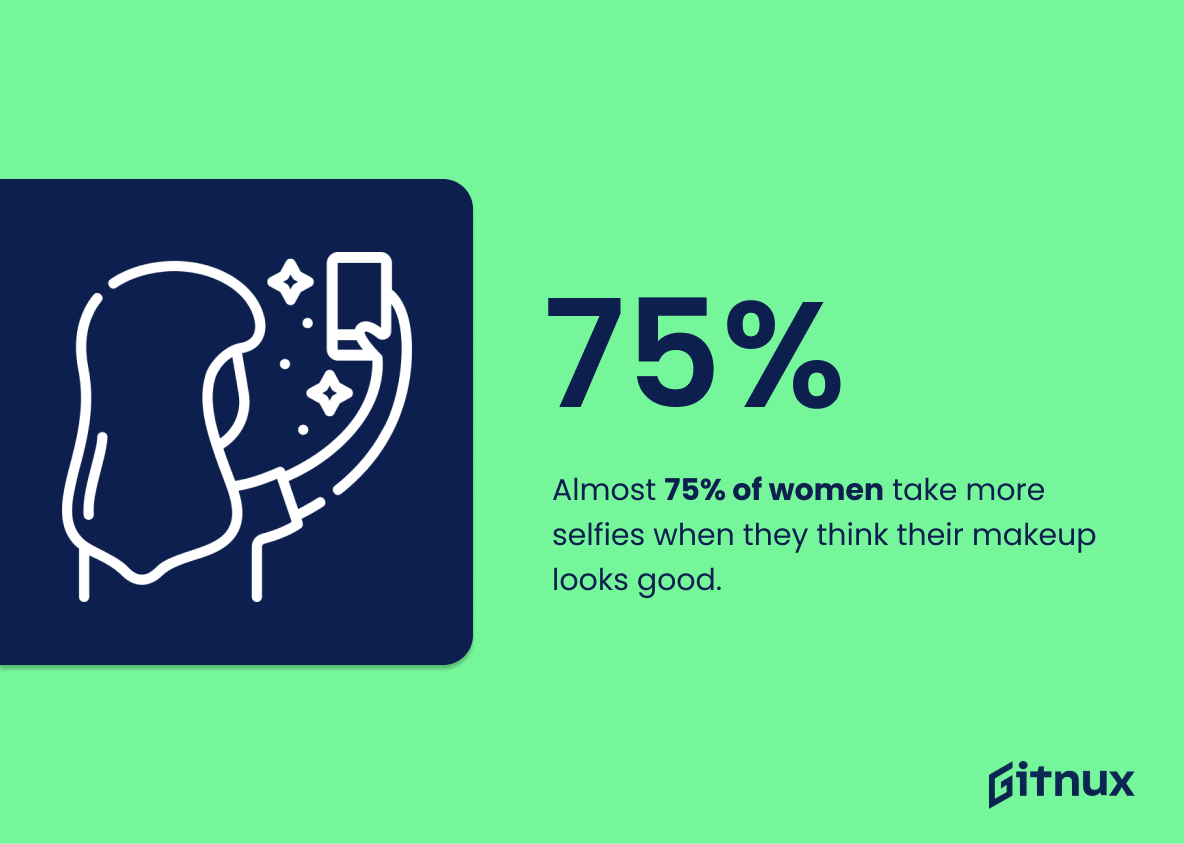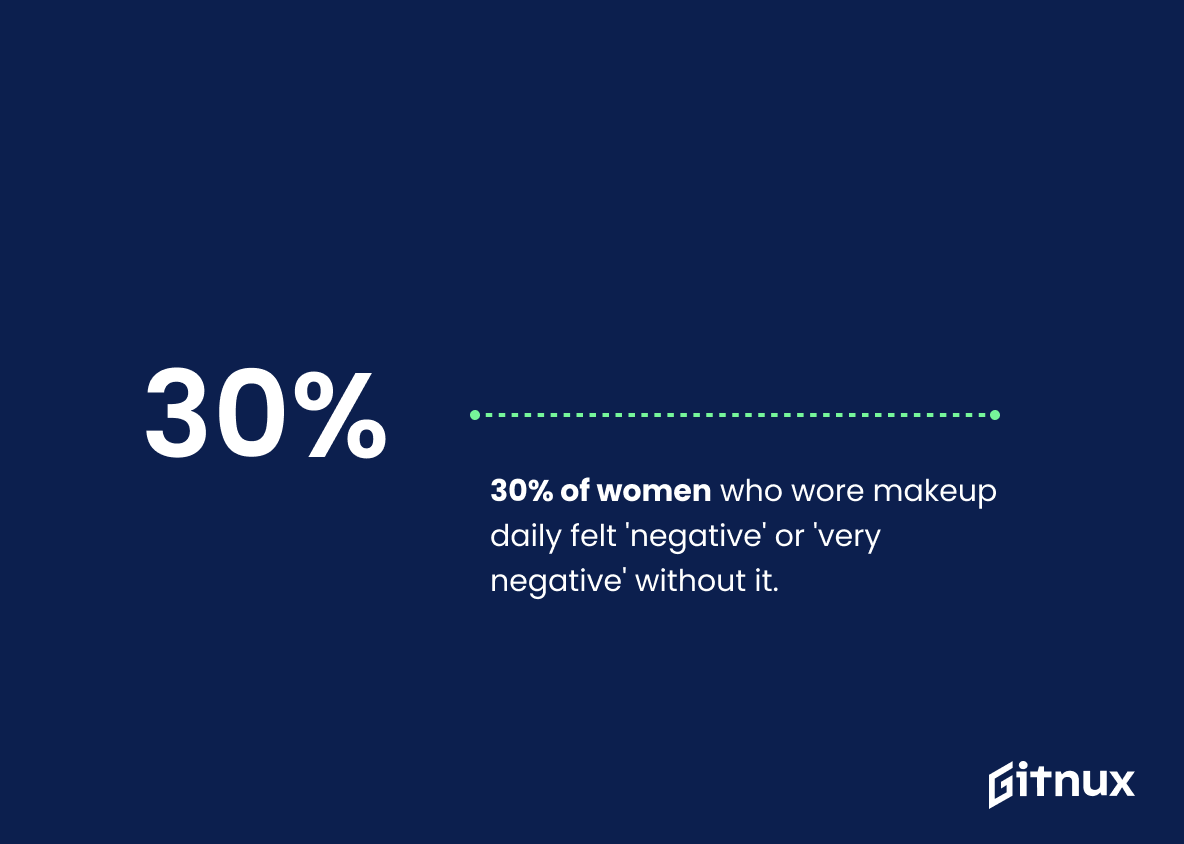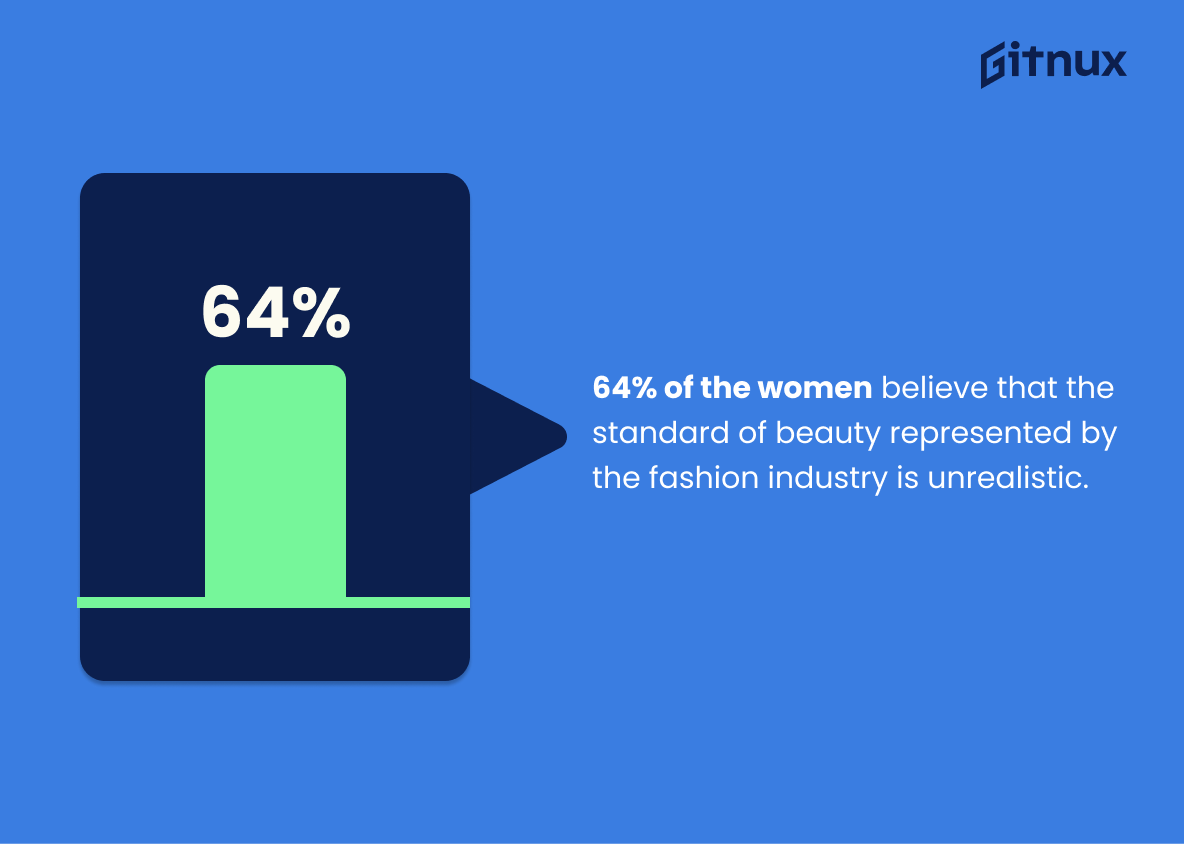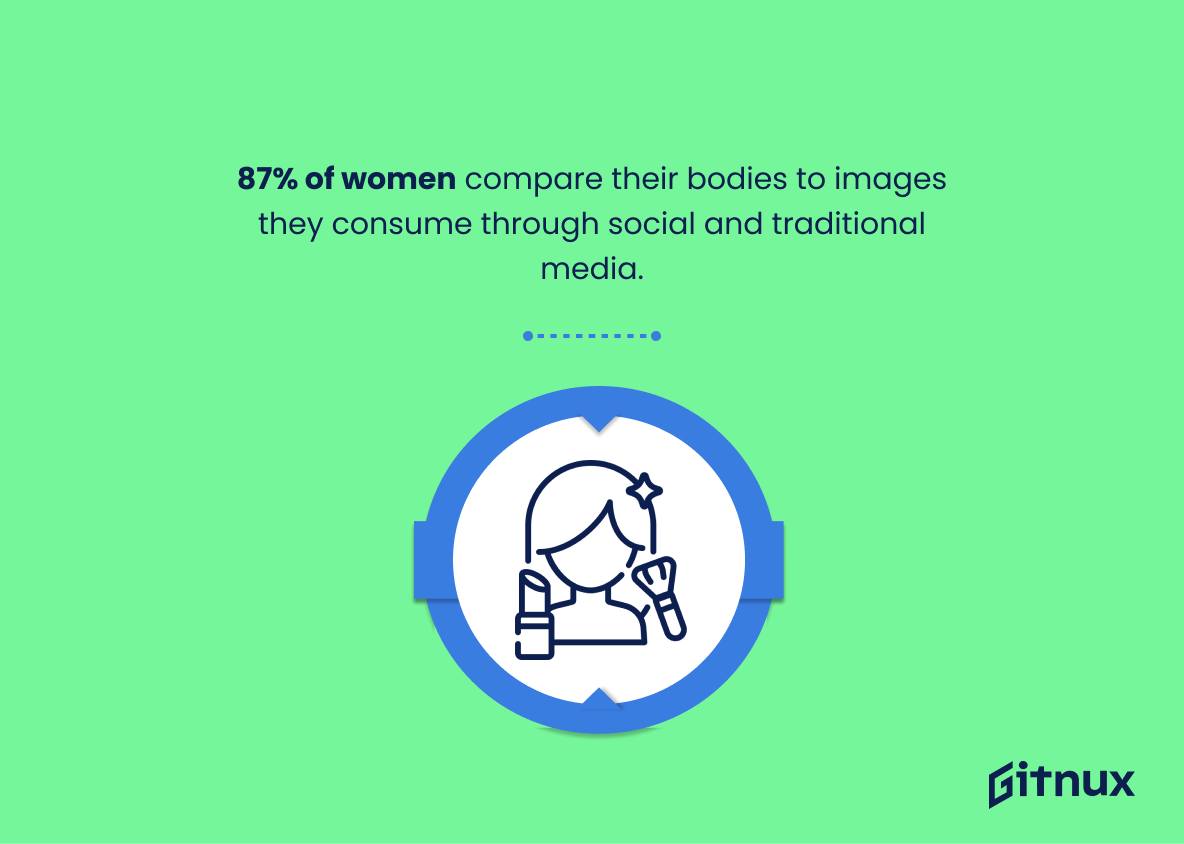In our modern society, beauty standards have evolved into a global conversation, profoundly influencing socio-cultural norms and individual perceptions. From ideal body shapes to flawless skin, these standards are the silent benchmarks against which we often measure ourselves and others. It’s no wonder that the statistics surrounding beauty standards are intriguing and eye-opening.
As we delve into this blog post, we’ll uncover the dramatic realities of beauty standards using hard-hitting numbers and data-driven insights, taking you on an enlightening journey through the societal expectations of beauty and their profound effects on both individual self-perception and wider cultural norms.
The Latest Beauty Standards Statistics Unveiled
56% of women are dissatisfied with their overall appearance.
In the pulsating rhythm of the beauty industry, the harmony seems to falter when faced with the discordant note of discontent – 56% of women voicing dissatisfaction with their overall appearance. A tune that reverberates powerfully within the narrative of our beauty standards statistics blog post. This statistic isn’t just a number; it’s a stark testament to the pressure imposed by societal aesthetics, morphing a mirror into a magnifying glass that amplifies perceived flaws.
It underscores the need for a paradigm shift, toward celebrating uniqueness instead of promoting homogenous beauty stereotypes. When more than half of the women feel at odds with their own reflections, it cries out for a review and redefinition of our beauty standards.
80% of women surveyed perceive the beauty industry affects their self-esteem.
In examining the compelling statistic that reveals how 80% of women surveyed feel that the beauty industry impacts their self-esteem, certain critical implications bubble to the surface. Imagine this number is not just astronomical but screams for attention when we unravel the narrative it weaves within the context of a blog post about Beauty Standards Statistics.
Firstly, this statistic illuminates the wide-reaching influence the beauty industry wields over women’s self-perception. It interprets a narrative where the majority of women are living under the shadow of beauty standards set by this industry, influencing not just their purchasing decisions, but more significantly, shaping their self-esteem.
Moreover, this percentage can be a stinging critique of the industry manipulation of beauty standards. The industry’s portrayal of beauty evidently plays a significant role in defining how women view themselves, highlighting the need for more diverse, inclusive, and realistic representations of beauty.
Finally, the striking 80% signals an opportunity for introspection and change. There’s a need for dialogue, education, and redefinition of beauty standards to encourage positive self-esteem among women. Therefore, this statistic isn’t just a number, it’s a call to action, a spark to ignite discussions, and most importantly, it’s a spotlight on an issue that can no longer be dusted under the rug.
5 in 10 girls in the US feel pressured to be ‘beautiful’.
Drawing attention to this revealing statistic, the fact that half of all American girls experience the weight of societal expectations to conform to a certain standard of ‘beauty’, elucidates the harsh reality of our culture’s beauty norms. It provides critical momentum to the argument being put forth in this blog post about beauty standards.
This data serves as a startling glimpse into the psychological stress that stereotypical beauty ideals impose on young girls in America, emphasizing the need for a broadened understanding and acceptance of diverse beauty. Thus, it illustrates vividly the magnitude of influence that beauty standards exert, making it pivotal in shaping the narrative of this blog.
About 50% of ads aimed at girls spoke about beauty, not brains.
Delving into the power of statistics, one can’t overlook the profound implication of the figure stating “About 50% of ads aimed at girls spoke about beauty, not brains.” Viewed through the lens of a blog post dissecting Beauty Standards Statistics, this astounding statistic serves as a stark mirror, reflecting society’s values and norms.
It underscores the societal pressure that subtly, yet consistently, pushes girls towards a beauty-centric ideal, edging away much-needed emphasis on intellect and capability. This omnipresent emphasis fuels the beauty industry, but at what cost to our girls? The depicted statistic starkly illuminates an alarming reality, inadvertently conditioning young minds to prioritize appearance over aptitude.
Nearly 7 in 10 girls believe that they are not good enough.
Unraveling the shroud around the statistic – ‘Nearly 7 in 10 girls believe that they are not good enough’ offers an eye-opening perspective on beauty standards. The stark reality of the psychological impacts of unattainable beauty ideals becomes glaringly evident.
A wholesome majority of young females, rattled by these standards, perceive themselves as ‘not good enough’ highlighting the massive toll these societal benchmarks can take on self-esteem and mental health. This invaluable data serves as an urgent call to action geared towards fostering healthier, more realistic beauty perceptions, making it an indispensable part of a discourse on Beauty Standards Statistics.
20% of women will consider cosmetic surgery in the future.
In the vibrant tapestry of beauty standards statistics, the narrative that ‘20% of women will consider cosmetic surgery in the future’ embroiders a poignant image. This data point paints a story of evolving perceptions, attitudes, and personal choices related to beauty ideals. It reflects the extent to which societal or personal beliefs about aesthetics may inspire women to contemplate such decisions, thus acting as a mirror to the influences and trends within our culture.
This valuable statistic, therefore, melds into the broader discussion, adding depth and perspective to the exploration of beauty standards. Its inclusion in the blog post enriches the analysis, shedding more light on the current beauty landscape and individual responses to it.
On average, 91% of women are unhappy with their bodies and resort to dieting.
This staggering piece of data provides a stark illumination of the true impact of societal beauty standards on women, sketching a concerning portrait of dissatisfaction and self-consciousness. It underscores the magnitude of the pervasive influence of unattainable beauty ideals propagated through various medium, including social media, print and television.
It draws attention to the significant proportion of women who feel compelled to alter their natural shapes through dieting in an effort to adhere to these exacting beauty norms. Grounded in this statistic, the blog post can act as an important catalyst for discourse around the need for more diverse and inclusive representations of aesthetic appeal. Thus, it may even begin transforming prevailing beauty standards, promoting healthier and more attainable body perceptions.
33.4% of respondents think that the current beauty standard is to be fit physically.
Delving into the numbers, the statistic revealing that 33.4% of respondents believe physical fitness defines the current beauty standard offers a striking perspective in the conversation surrounding Beauty Standards Statistics. It has an undeniable relevance as it underscores a significant shift towards physical health and fitness that rises above traditional aesthetics.
This percentage essentially paints a vivid portrait of evolving perceptions and is pivotal to understanding contemporary societal values. Furthermore, it sets the stage for an insightful audit of how these transforming norms interact with and shape beauty industry trends, consumer behavior as well as health and lifestyle choices.
68% believe diversity in beauty advertising is important for younger generations to see.
In the vibrant tapestry of the blog post about Beauty Standards Statistics, the gemstone of a statistic – ‘68% believe diversity in beauty advertising is important for younger generations to see’, sparkles with distinctive value. Dancing with deep implications, this statistic precipitates an awakening over the profound effect diverse representation in beauty promotion could have on molding perspectives of young ones.
Shaping their outlook on beauty, this figure underscores the industry’s capacity to redefine not just appeal but societal norms, instilling an inclusive vision of beauty for the nascent generations. Furthermore, it blinks a spotlight on the responsibility resting on marketers’ shoulders, thereby encouraging actions that resonate with the felt need for diversity in beauty advertising. Like a key turning in a lock, this statistic heralds a canal for potential shifts in the beauty industry.
One in five UK adults feel ugly and unattractive without makeup.
Shining a spotlight on an intriguing yet alarming nugget of data, ‘one in five UK adults feeling ugly and unattractive without makeup,’ bequeaths us with profound insights into the psychological and social implications of contemporary beauty standards. This statistic helps to paint an honest, albeit disconcerting, picture of society’s perception of beauty. Traditionally, beauty has been largely visual, and this statistic suggests that makeup, a tool used to enhance or alter one’s appearance, has become a vital component of some people’s self-image.
It underscores the importance of challenging and broadening these constraining beauty narratives in order to promote healthier and more inclusive beauty standards. A critique, discussion or a further delve into such findings, woven into a blog post about Beauty Standards Statistics, can stimulate vital conversations about aesthetics, self-esteem, and the need for psychological self-care initiatives.
Almost 75% of women take more selfies when they think their makeup looks good.
In the landscape of Beauty Standards Statistics, the fact that nearly three-quarters of women take more selfies when their makeup is on point highlights how deeply ingrained beauty perceptions are. This statistic serves as a tangible proof of the influence that cosmetology has in reinforcing self-confidence and self-expression among women.
It is a telling marker of societal influence, where a woman’s belief in her external appearance, amplified by makeup, increases her inclination to visually document and share her appearance. This not only underlines the significant role of beauty standards in daily lifestyle, but also brings to light the potential pressures and impacts of these standards.
Seven out of 10 women and 63% of men agreed that women today are under too much pressure to have a perfect body.
This striking statistic shines a light on the pervasive issue of unrealistic beauty standards, a topic that is not only relevant, but vital within our society. The numbers show a clear majority of both women and men recognising the immoderate amount of pressure placed on women to achieve unattainable body ideals, providing a quantitative backing to the subjective experiences reported by many individuals.
This insight is paramount to conversations about beauty standards, adding substance to the dialogue and moving it beyond anecdotal evidence. It helps us conceptualize just how pervasive and universally recognized these pressures truly are. Additionally, the finding that over half of men acknowledge this issue, indicates a broader societal awareness, opening avenues for further discussion about collective action and responsibility towards change in attitudes.
30% of women who wore makeup daily felt ‘negative’ or ‘very negative’ without it.
Woven into the threads of our blog post about Beauty Standards Statistics, this fascinating revelation of ‘30% of women who wore makeup daily felt ‘negative’ or ‘very negative’ without it’ offers a remarkable window into the psychological impacts of beauty norms. It illuminates how deeply cosmetic usage can influence self-perceptions and emotional well-being, painting a vivid picture of the realities many face in their relationships with makeup.
This quantifiable evidence gives us greater insight into the pressures exerted by societal beauty standards and propels us into deeper exploration of both individual and collective journeys towards self-acceptance. Acknowledging and understanding this statistical insight can pave the way for more compassionate dialogues around beauty and self-esteem.
64% of the women believe that the standard of beauty represented by the fashion industry is unrealistic.
The stark figure of 64% of women acknowledging the unrealistic beauty standards set by the fashion industry underscores the pervasive nature of the problem. It reveals the underlying societal issue – a widespread epidemic of distorted beauty ideals imposed by the fashion world. This hard-hitting statistic breathes life into a blog post about Beauty Standards Statistics, linking abstract numbers with concrete experiences of real women.
It functions as a powerful magnifying glass, bringing into sharp focus an issue that is often brushed under the carpet – the disconnect between everyday reality and the fashion industry’s fabricated beauty ideal. It serves to raise awareness, initiate discourse, and spur change towards healthier and more realistic beauty standards.
87% of women compare their bodies to images they consume through social and traditional media.
Delving into the profound labyrinth of beauty standards, our perceptive gaze stumbles upon a striking figure: an overwhelming 87% of women find themselves juxtaposing their bodies against the images invading their everyday life via social and traditional media. This numeric testament paints a recurring picture in our collective consciousness, one parading unrealistic beauty norms.
Imagine, if you will, standing amid a sea of almost nine out of every ten women around you, all echoing the same narrative of silent comparison. Wouldn’t this underscore an intricate need for a paradigm shift? This statistic serves as a compelling lighthouse guiding us to the precarious cliffs on which society’s beauty standards are precariously perched.
Cutting through the cacophony of advertisements, pop culture references, and celebrity endorsements, the statistic amplifies a resonating cry for more realistic, diverse, and inclusive representations. It sends a clarion call advocating for a shift from the rigid, airbrushed beauty standards towards a more egalitarian celebration of individuality and natural beauty.
In essence, this figure is not just a statistic, it’s a mirror reflecting contemporary society’s perceptions and the pressing need to shatter these handcuffs of uniformity. Embarking on this journey through the landscape of beauty standards, this statistic is our first waypoint – a sobering realisation marking the relentless pursuit of a more accepting and liberating definition of beauty.
According to a study, only 2% of women around the world would describe themselves as beautiful.
Illustrating the magnitude of the global beauty standards issue, this surprisingly low percentage of women, a mere 2%, considering themselves as beautiful is a stark wakeup call. It uncannily highlights the adverse effects of pervasive and often unrealistic societal beauty norms. In the vast arena of beauty standards, this statistic not only serves as a poignant reminder of the harsh self-perceptions women have of themselves due to these norms, but also provides a compelling point of discussion, paving the way for deeper conversations about self-image, acceptance, and the necessity for a genuine shift in societal attitudes.
Women who view more fashion magazines have higher levels of body dissatisfaction, yet 69% of them report that these images impact their conception of the ideal body shape.
Delving into the heart of the beauty standards conundrum, this intriguing statistic serves as a clear-eyed reflection of the impact media has on women’s self-perception. The fact that a significant 69% of women acknowledge the influence of fashion magazines on their idea of an ‘ideal body’ is a revelation of the silent power these glossy pages wield.
Furthermore, the corresponding increase in body dissatisfaction underscores the potentially harmful imbalance between curated beauty ideals and the ripple effects on personal body image. So, when we unmask the figures behind the fashion industry’s impact on women’s self-perception and body satisfaction, we brandish a double-edged sword – underscoring the influence of media while highlighting the need for a healthy dialogue about beauty standards.
Conclusion
The exploration of beauty standards and how they correlate with societal expectations is indeed a riveting journey. It’s apparent that these standards are ever-evolving, shaped by various cultural, environmental, and personal factors. Although some beauty standards can have a negative impact on self-esteem and mental health, there is also a significant shift towards a more diverse and inclusive understanding of beauty.
Continually educating ourselves and engaging in supportive discussion about these beauty standards helps dismantle harmful stereotypes. Ultimately, there is no definitive standard for beauty – the most authentic beauty comes from acceptance and embracing individual diversity. Keep this conversation alive, promote self-love, and let’s collectively redefine the beauty standards that bind us.
References
0. – https://www.www.apa.org
1. – https://www.www.beautycrew.com.au
2. – https://www.www.newbeauty.com
3. – https://www.www.dosomething.org
4. – https://www.timesofindia.indiatimes.com
5. – https://www.www.marketplace.org
6. – https://www.www.healthline.com
7. – https://www.www.globalskinatlas.com
8. – https://www.www.popsugar.com
9. – https://www.www.ncbi.nlm.nih.gov
10. – https://www.www.eatingdisorderhope.com
11. – https://www.www.glamour.com
12. – https://www.www.statista.com
13. – https://www.www.adweek.com
14. – https://www.www.prnewswire.com

